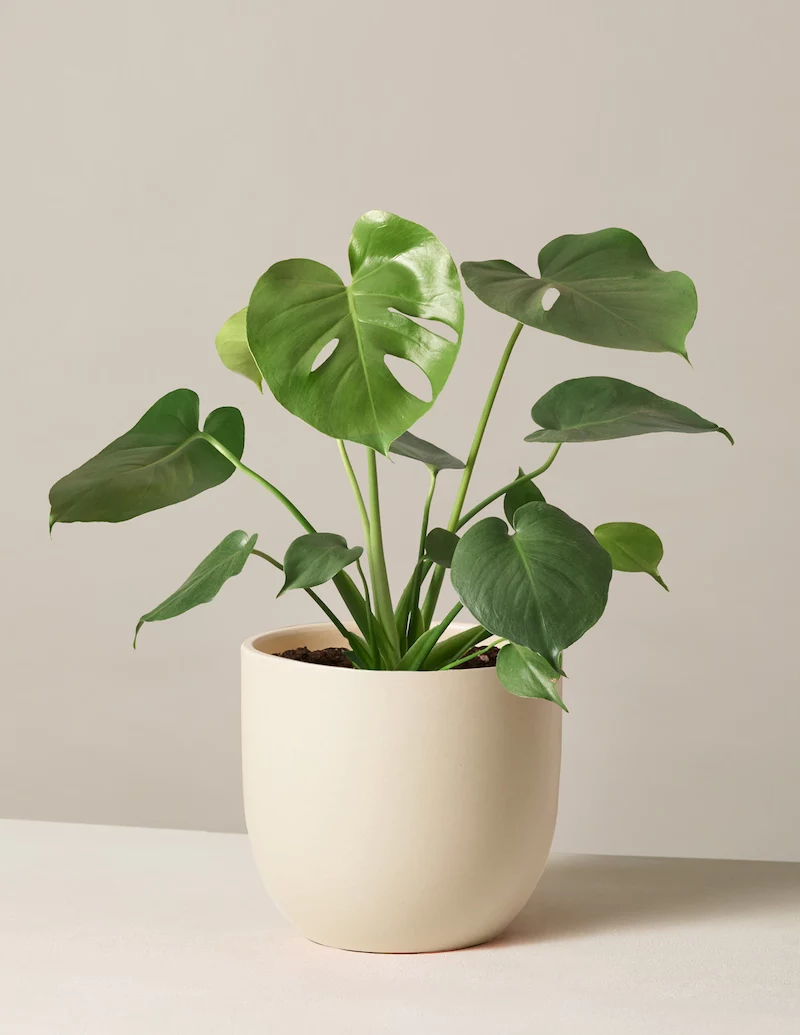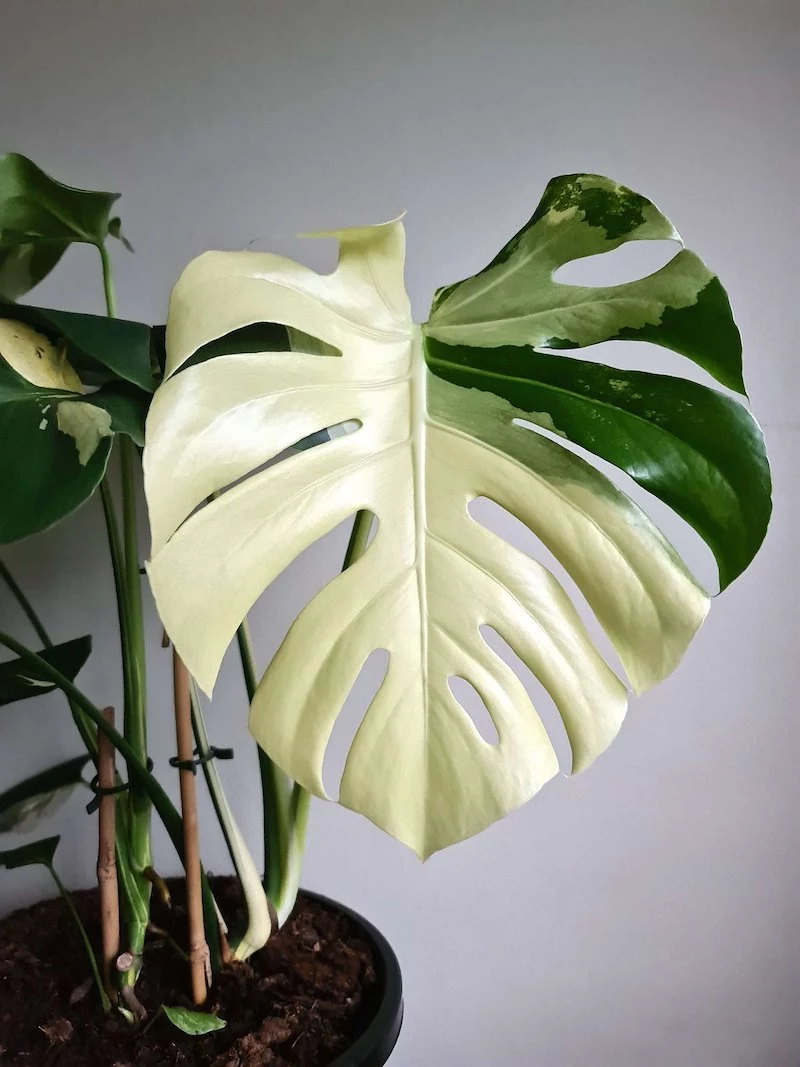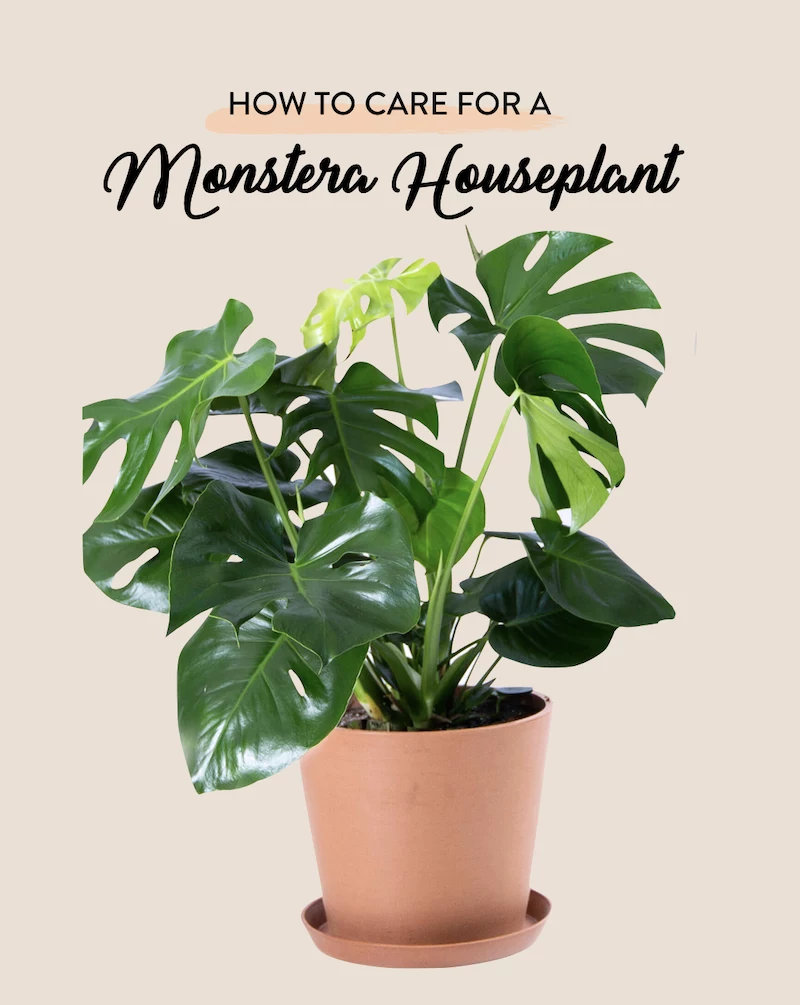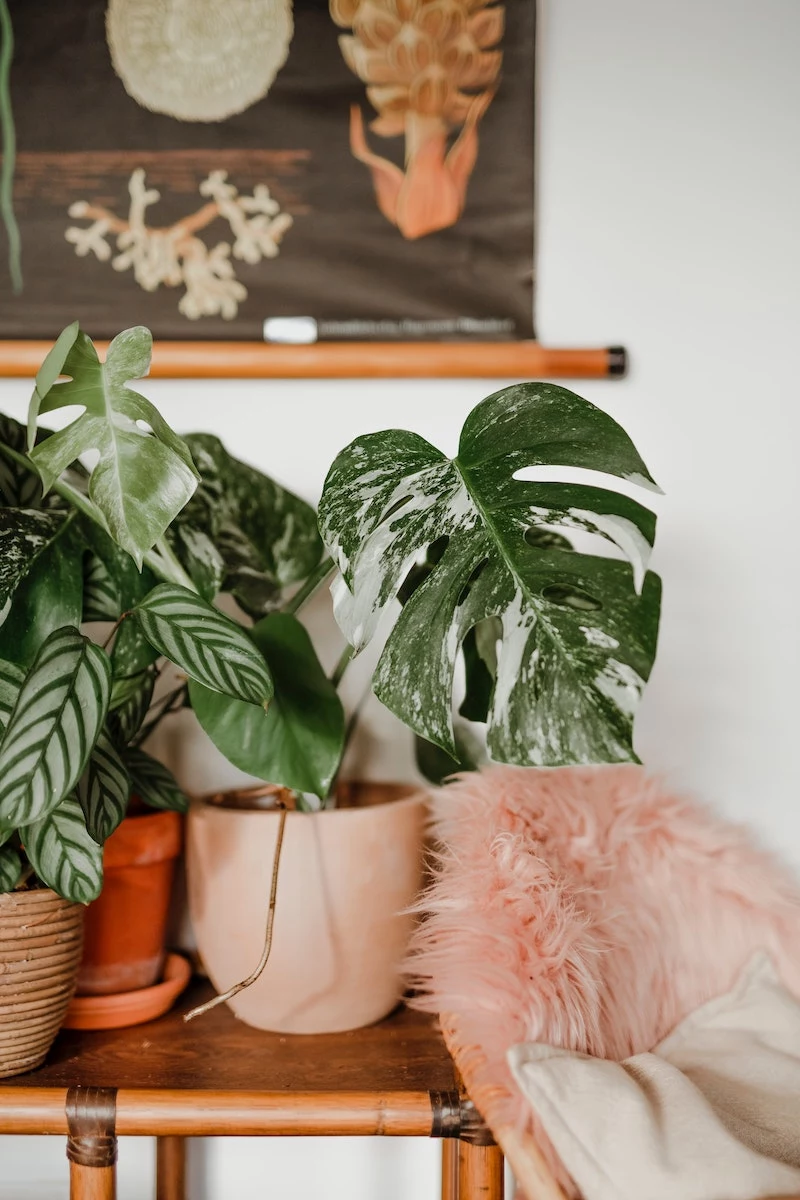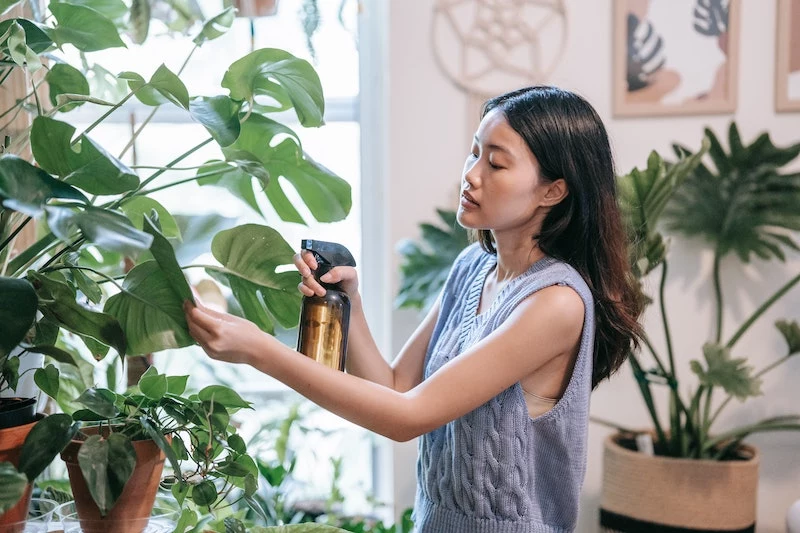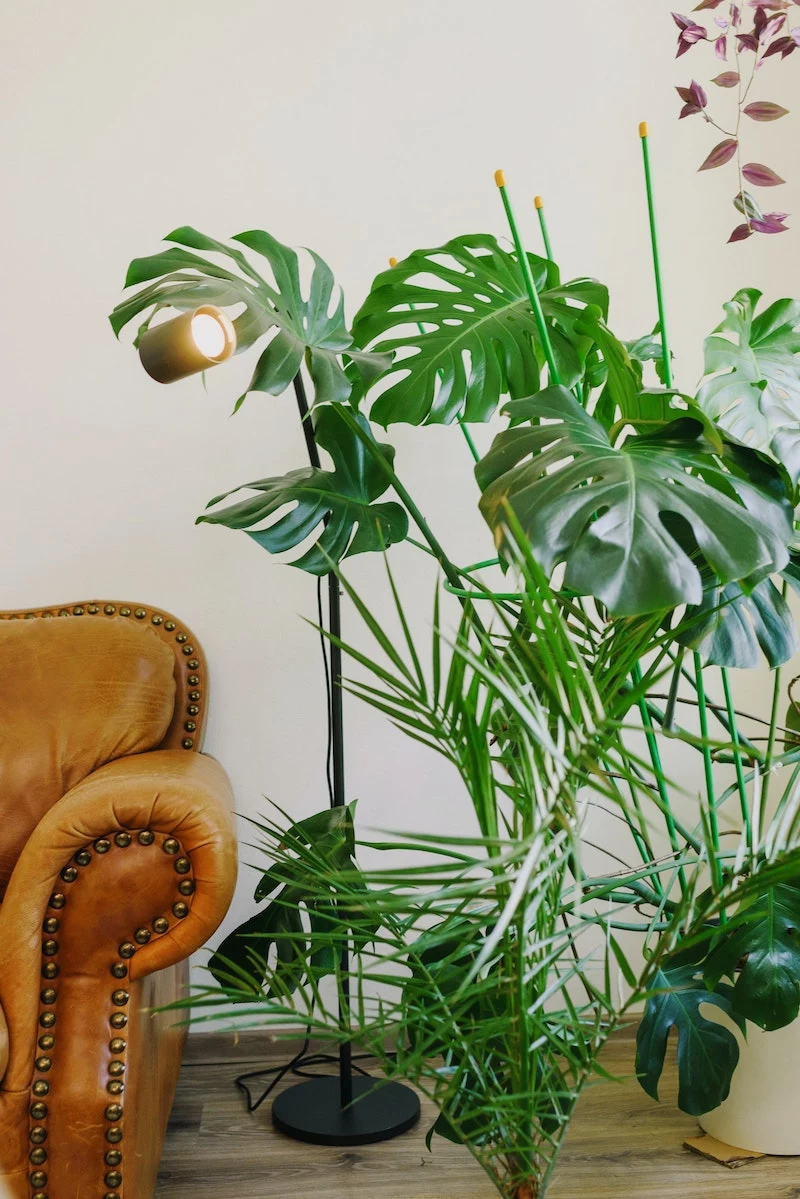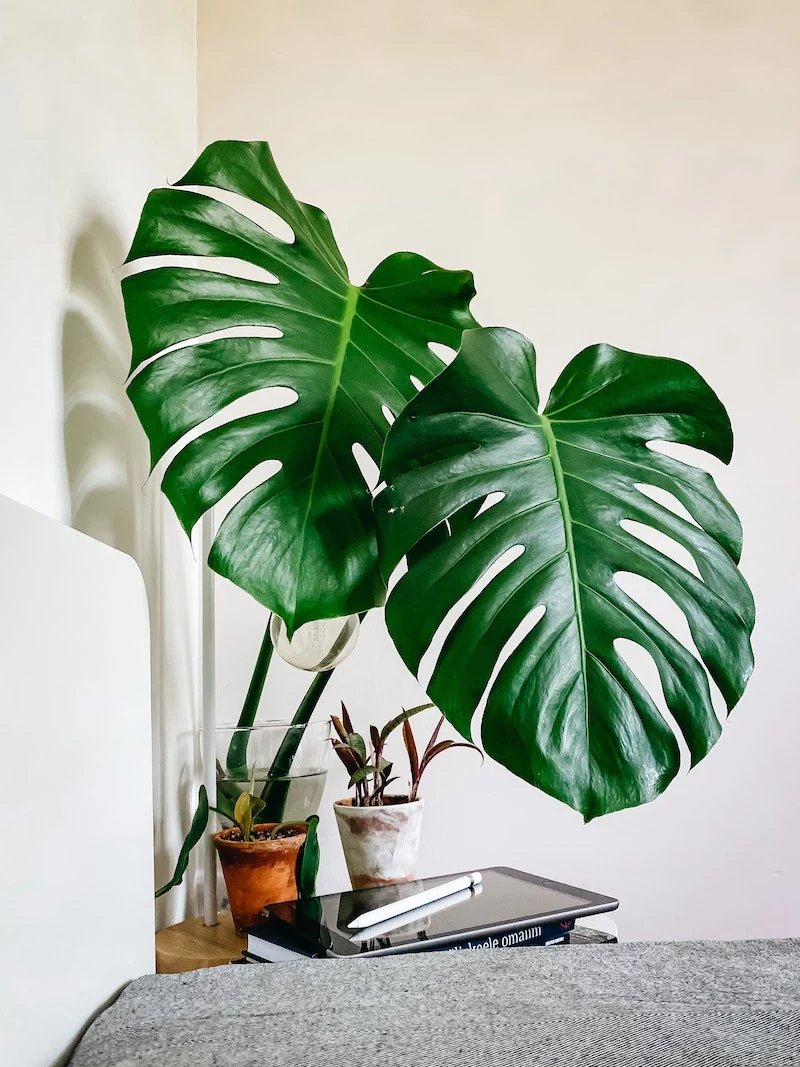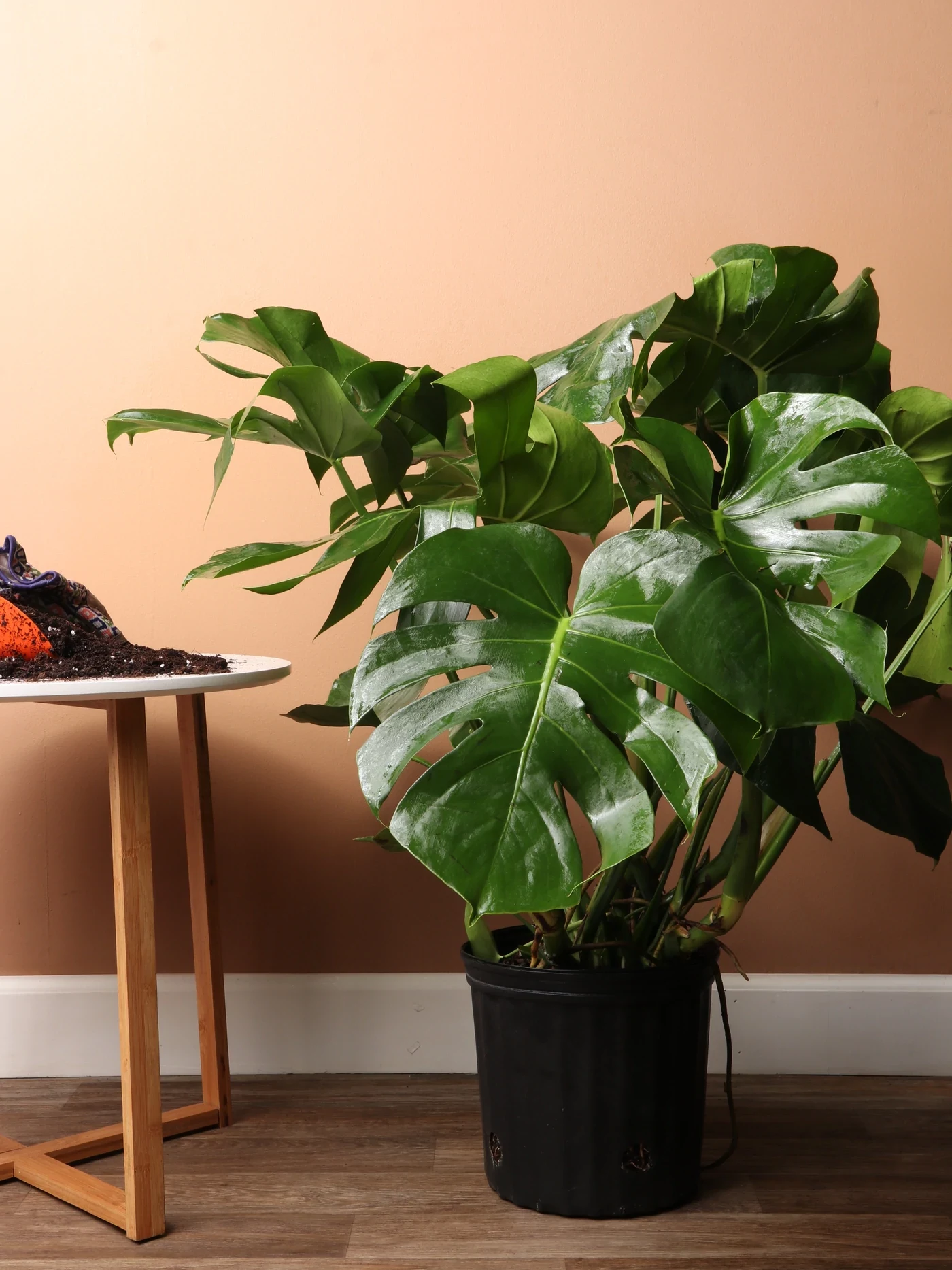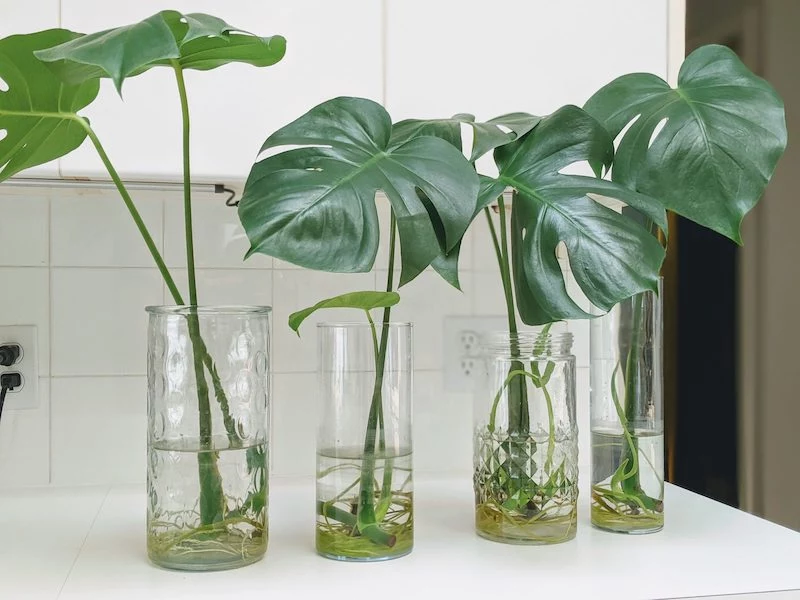Ultimate Monstera Guide: How to care for & propagate Monstera Deliciosa
The evergreen Monstera plant is gaining in popularity. And there is a reason why. Monsters are a species of evergreen tropical vines and shrubs that are native to Central America. They are known for their natural holes that form on the leaves, which explains their nickname “Swiss cheese”. The holes in the leaves of this plant are called fenestration and maximize the capture of sunlight along the forest floor. Two different species of Monstera are grown as houseplants – the split-leaf Monstera Delicioisa and the so-called Swiss cheese Monstera. The Swiss cheese Monstera is distinguished by longer, narrower leaves as well as fully enclosed leaf holes. In this article, we will show you how to care for and propagate Monstera Deliciosa, which is one of the most beautiful house plants you can have.
Monsteras are popular for their big, beautiful leaves
A quick look at other popular varieties of Monstera
Monstera Deliciosa: One special thing about this variety is that its leaves are most often not the same size or shape. And if you want to grow several of them, you will notice some changes in the structure and color code of the leaves.
Monstera Obliqua: Monstera Obliqua has leaves with the largest holes. The holes can cover up to 90% of the leaf surface, making the plant quite delicate to care for. And it’s no wonder why this variety is hard to find in most gardening stores. To date, research is still being conducted to crossbreed this type with other notable varieties.
Monstera Variegata: What is easily recognizable about this variety is the color variation of its leaves. They have huge whitish spots that you might mistake for dye. Compared to other options, this variety is hard to find, which is why its price is quite often on the high end.
Monstera Dubia: If you want to grow a climbing plant, this is an ideal variety worth adopting. Although it has smaller leaves and develops more like a vine, it can move up once it gets a hold of a solid support to help it climb.
Here is our complete guide for taking care of Monstera Adansonii– the Swiss cheese plant!
Monstera Deliciosa loves to climb and explore new corners in your home
Monsteras come in different shapes, sizes, and even colors!
Monstera Deliciosa
Native to the rainforests of Central America, the open-leaved Monstera is also known as the “divided-leaved philodendron”. This climbing evergreen plant is popular, easy to grow, and a favorite of many. Indoors, the plant grows about 60 cm tall. Plant it outdoors at any time of the year, and it will also delight you with flowers and edible juicy fruit with a combined pineapple and banana flavor. However, fruiting is rare with houseplants. This Monstera blooms year-round in warm, humid weather. When you plan to plant it outdoors, place it in partial shade in well-drained soil. If the soil is naturally salty, move the plant indoors or to a patio. Apply a balanced fertilizer three or four times a year and the plant can grow 3 meters tall or more.
Caution: This beautiful plant can be toxic to pets. If you have a furry friend, make sure to buy pet-friendly plants for your home!
Let’s dive into the care and needs of this unique plant
Light
This evergreen plant prefers bright, indirect sunlight in temperatures that are kept consistently between 18 and 25 degrees Celsius. Too much direct light during the warmer months can burn the foliage. However, place your houseplants outside at least once a year in direct sunlight to encourage growth. Outdoors, the Monstera can grow in full shade and partial shade. If you want to place a plant in your bedroom, then check our bedroom plant aesthetic article!
Monsteras prefer bright but indirect light
Soil
When planted in a container, it requires a peat-based potting medium. Outdoors it is suitable for light sandy, medium loam, and heavy clay soils with acid, or neutral pH. However, Monstera Deliciosa thrives best in well-drained, moderately moist soil. And, here is how you can use coffee grounds for your household plants!
Monsteras need well-draining, moderately moist soil
Water
Water the plant regularly during the growing season. The soil will need to dry slightly between watering. Water only occasionally in autumn and winter. To increase humidity indoors, mist the foliage using a spray bottle of demineralized, or rainwater.
Monsteras love humidity, so you can give them a spray every now and then
Fertilizer
If necessary, use a balanced liquid fertilizer every few weeks during the growing season for your houseplants. You can make the fertilizer you need for your Monstera yourself, using only safe materials.
Plants need fertilizer only in their growing periods
Pruning
Prune aerial roots if they become too unruly for the space, although it is preferable to tuck them back into the pot. Unlike some other houseplants, their roots do not damage surfaces. The stems and leaves respond well to pruning and can be used for propagation.
Stems and leaves can be pruned and used for propagation
Pests and Diseases
Like other commonly grown houseplants, Monstera Deliciosa is prone to few pests and diseases. But what would probably cheer you up is that these problems aren’t too severe if only you can wash them out early enough. When the roots of this variety are soaked in water for long, it is most vulnerable to fungal stains on the leaves and the stems will begin to rot due to bacteria. You may also have to deal with insects and mites. Allow the first two inches of topsoil to dry completely before watering your houseplant again to prevent root rot. Any time the leaves start to turn brown or have yellow spots, it means you are using water that has soluble salts or is too alkaline for your Monstera. And if the foliage starts to lose its luminous green color, it could be a sign that you’re exposing your Monstera to too much bright light or not giving it enough fertilizer.
A healthy Monstera is lush, green, and pest-free
How to propagate Monstera Deliciosa with divided leaves
Monstera Deliciosa can easily be propagated by stem cuttings. However, the most popular method of propagating Monstera Deliciosa is aerial budding. Here are the steps for both methods:
Big and mature Monsteras can be propagated using these 2 easy methods
How to propagate Monstera Deliciosa with stem cuttings:
- Using clean, sharp pruning shears, cut a stem that includes a node, an aerial root, and at least two leaves.
- Put some ground cinnamon on the mother plant where you made the cut. This will prevent the disease from entering the cut and help heal the wound.
- Place the cutting in a glass of water. Change the water every three to five days and if possible, use filtered, or rainwater.
- You’ll see a clump of roots growing in a few months. At this point, you can place your new plant in a pot of fresh soil and keep it moist until it is established in its new home.
Place your cuttings into clean water and change it frequently
Time for a new, smaller pot for the baby Monsteras
Here is how easy the whole process is!
How to propagate Monstera Deliciosa with air vent:
Air-venting is the preferred method with minimal risk because no incision is made in the mother plant until the baby is ready to be potted with its new roots. For this method, you will need moss, a plastic bag, and twine.
- Find a stem with a few knots (where the roots will grow). Or find a leaf that grows from a stem and has a short aerial root under it.
- Cut a small slit about 1/3 the width of the stem, just below this root.
- Wrap a 1-inch layer of sphagnum moss around where the leaf joins the stem.
- Spray the moss with water to increase moisture and wrap it in plastic. Use twist ties to secure it (it may look a little messy, which is fine).
- Make sure the moss can stay moist until the roots develop.
- When the roots develop in a few months, you can cut (with a clean, sharp tool) the stem below the roots and establish the young plant with its roots in a fresh pot of soil.
- Finally, be sure to tap the ground cinnamon onto the wound created on the mother plant. This will prevent any disease from getting into the cut and help the wound heal.
It is important to know all the parts of your Monstera
Monsteras are one of the coolest plants to have in your home! Make sure to take good care of them, so you can enjoy their beauty for the longest time!
Now you know how to properly take care of this beauty!
